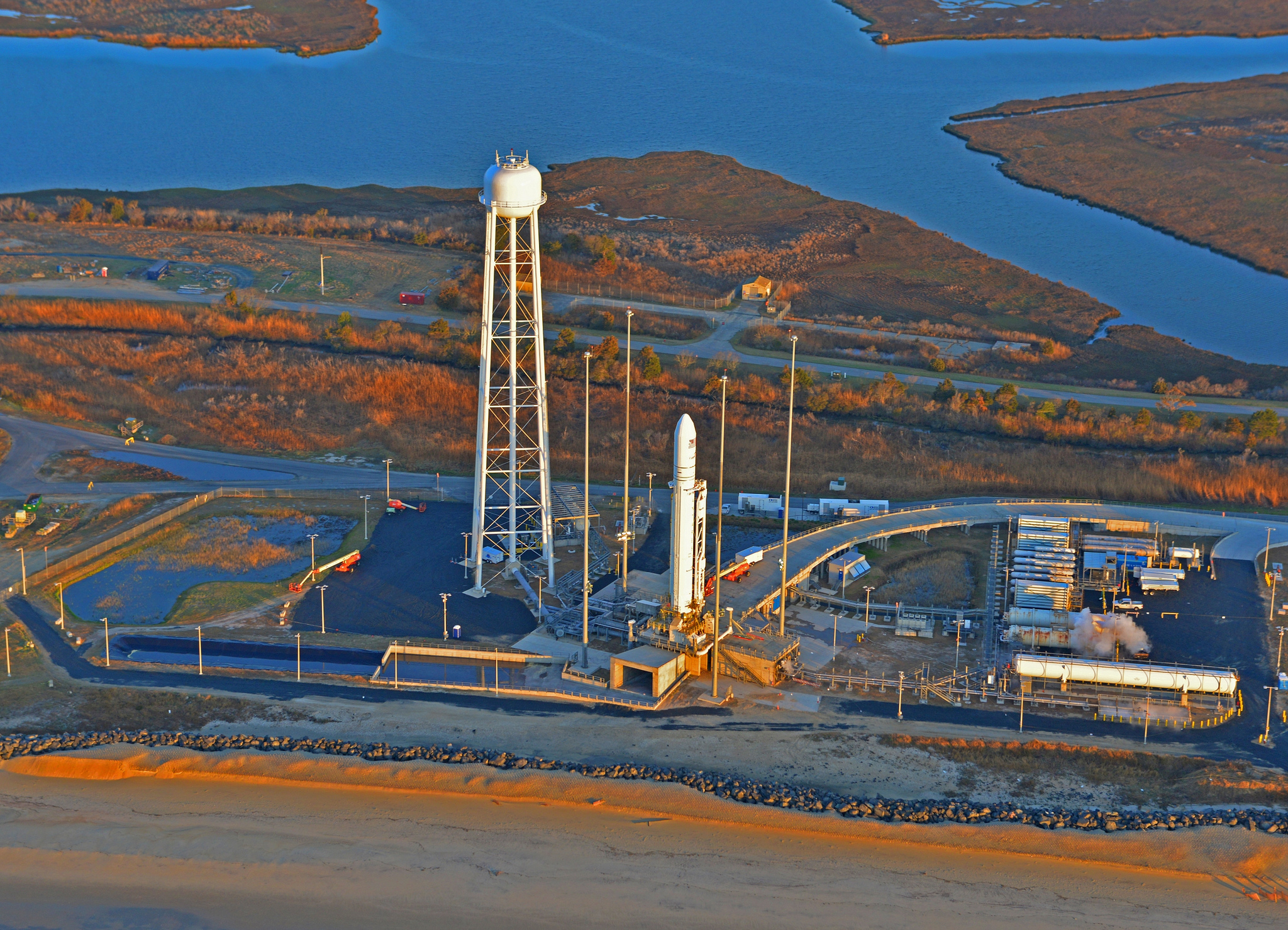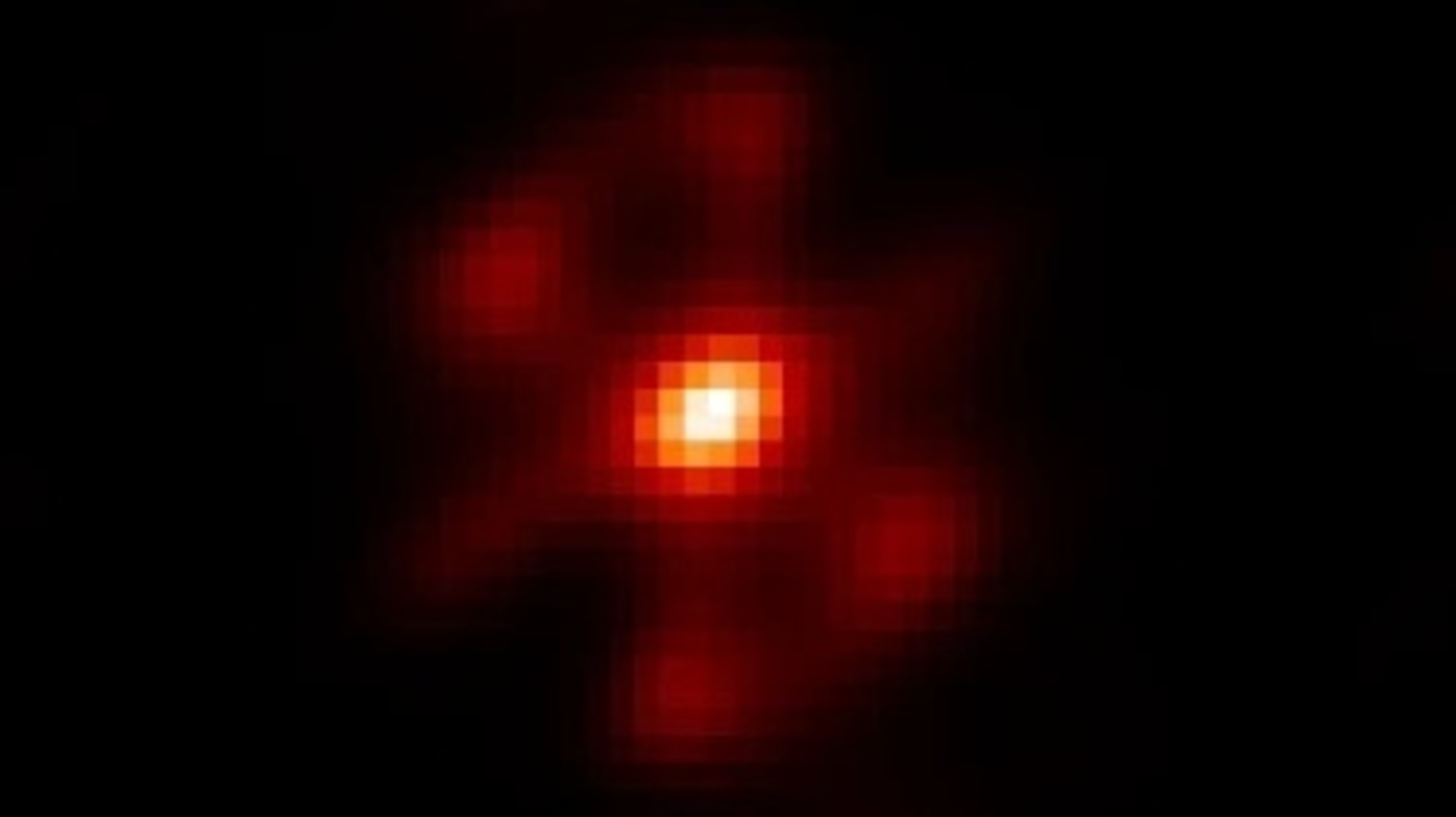New Private Rocket's Maiden Launch Set for Saturday

The critical test flight of a new private cargo-carrying rocket will come no earlier than Saturday afternoon (April 20) due to weather delays and a technical glitch.
The private aerospace firm Orbital Sciences Corp. had aimed to fly its Antares rocket Wednesday (April 17) from Virginia's Mid-Atlantic Regional Spaceport (MARS) on Wallops Island, but a data cable separated from the booster earlier than planned, forcing officials to postpone the launch attempt just minutes before liftoff. Orbital initially considered trying again Friday (April 19) but nixed that idea because of weather concerns.
"Weather conditions deteriorate on Friday, April 19, but improve significantly over the next two days, increasing the chances for acceptable conditions at launch time," company officials said in a statement Thursday (April 18). "This also allows the Antares launch team a day of rest before back-to-back opportunities on Saturday, April 20 and Sunday, April 21." [See photos of Orbital's Antares rocket test]
The Antares rocket is now slated to launch Saturday at 5 p.m. EDT (2100 GMT) Saturday from MARS, which is located at NASA's Wallops Flight Facility. Antares' launch window runs through April 29, NASA officials said.
NASA TV will provide a live broadcast of the Antares launch online beginning at 4:30 p.m. EDT (2030 GMT) if a Saturday attempt goes forward. You can watch the Antares launch webcast live here at SPACE.com, courtesy of NASA.
Virginia-based Orbital Sciences is counting on the 131-foot-tall (40 meters) Antares rocket to launch its Cygnus spacecraft on unmanned cargo missions to the International Space Station. The company holds a $1.9 billion deal with NASA to make eight such flights.
This test flight — which Orbital is calling A-ONE — won't carry a Cygnus, and it won't go to the space station. Rather, it will loft a Cygnus "mass simulator," a mock payload filled with sensors to mimic the weight of a real spacecraft, to orbit to demonstrate Antares' capabilities.
Breaking space news, the latest updates on rocket launches, skywatching events and more!
A-ONE will also serve as a test of Antares' launch pad at MARS, known as Pad 0A. The pad was originally built for the now-defunct Conestoga rocket in 1995 but was completely refurbished to accommodate Orbital's new booster.
If all goes well with the A-ONE flight, Antares could blast Cygnus on a demonstration mission to the space station as early as late June, Orbital officials have said.
Orbital isn't the only company with a NASA cargo contract. California-based SpaceX signed a $1.6 billion deal to make 12 robotic flights with its Falcon 9 rocket and Dragon capsule. SpaceX has completed two of these contracted missions already, the first in October 2012 and the second last month.
Antares' maiden launch should put on a show for observers over a large stretch of the U.S. East Coast if clouds don't get in the way. Viewing maps released by NASA and Orbital suggest that liftoff could be visible from as far north as Portland, Maine, and as far south as Charleston, S.C.
Editor's note: If you snap a great photo of Orbital's Antares rocket launch that you'd like to share for a possible story or image gallery, send photos, comments and your name and location to managing editor Tariq Malik at spacephotos@space.com.
Follow Mike Wall on Twitter @michaeldwall and Google+. Follow us @Spacedotcom, Facebook or Google+. Originally published on SPACE.com.

Michael Wall is a Senior Space Writer with Space.com and joined the team in 2010. He primarily covers exoplanets, spaceflight and military space, but has been known to dabble in the space art beat. His book about the search for alien life, "Out There," was published on Nov. 13, 2018. Before becoming a science writer, Michael worked as a herpetologist and wildlife biologist. He has a Ph.D. in evolutionary biology from the University of Sydney, Australia, a bachelor's degree from the University of Arizona, and a graduate certificate in science writing from the University of California, Santa Cruz. To find out what his latest project is, you can follow Michael on Twitter.
